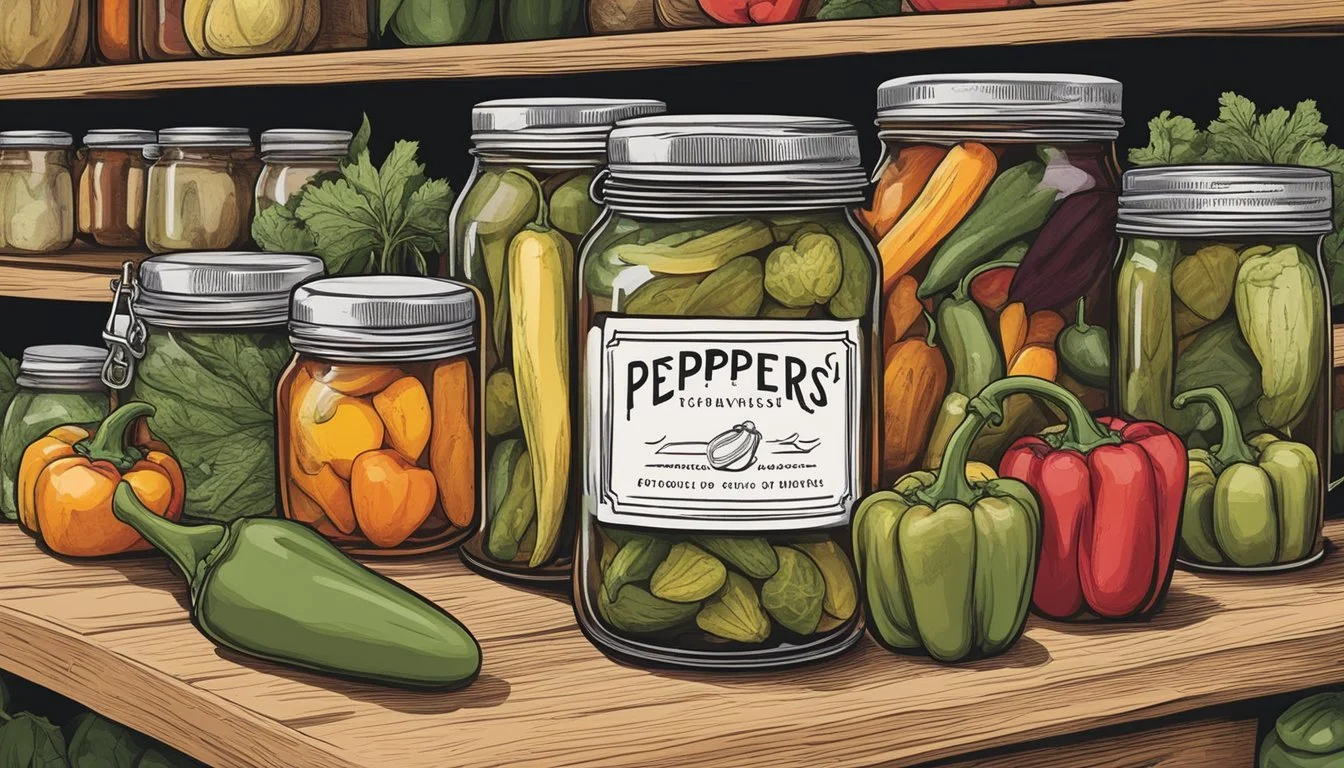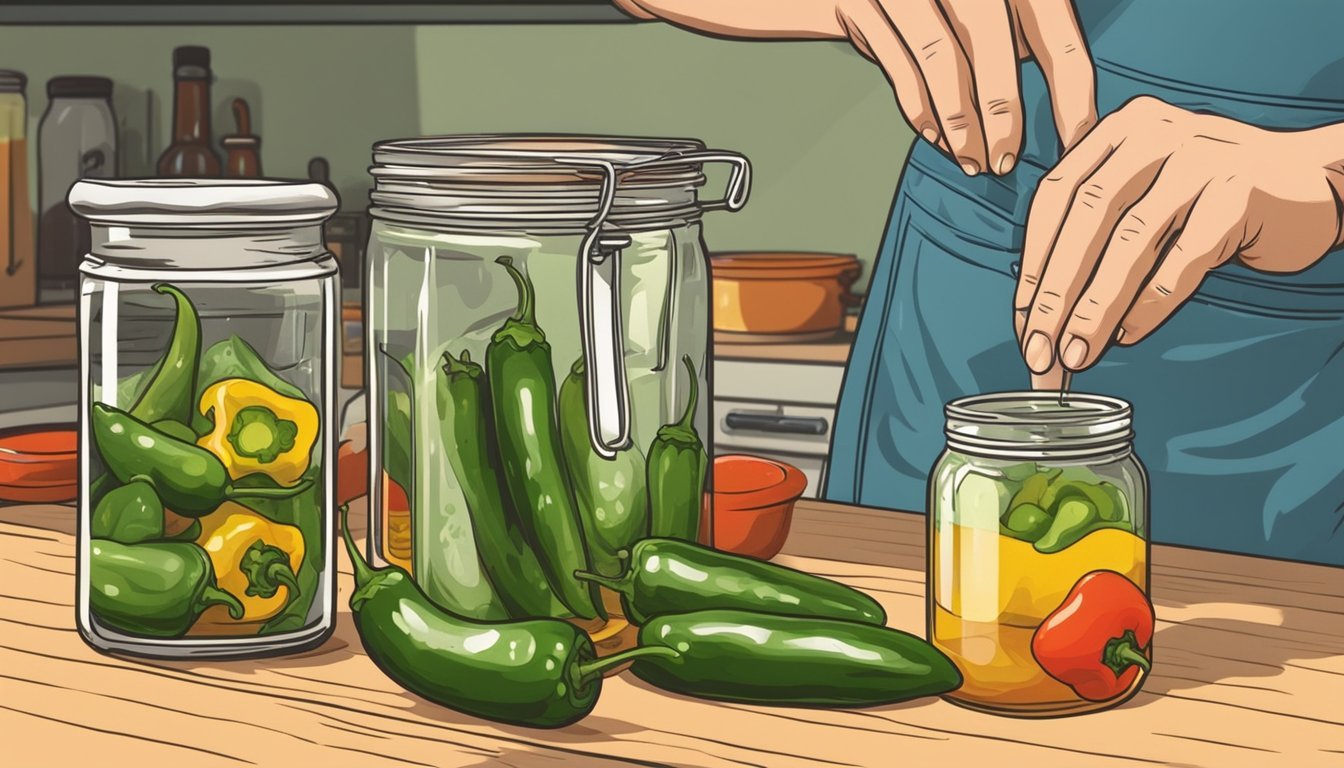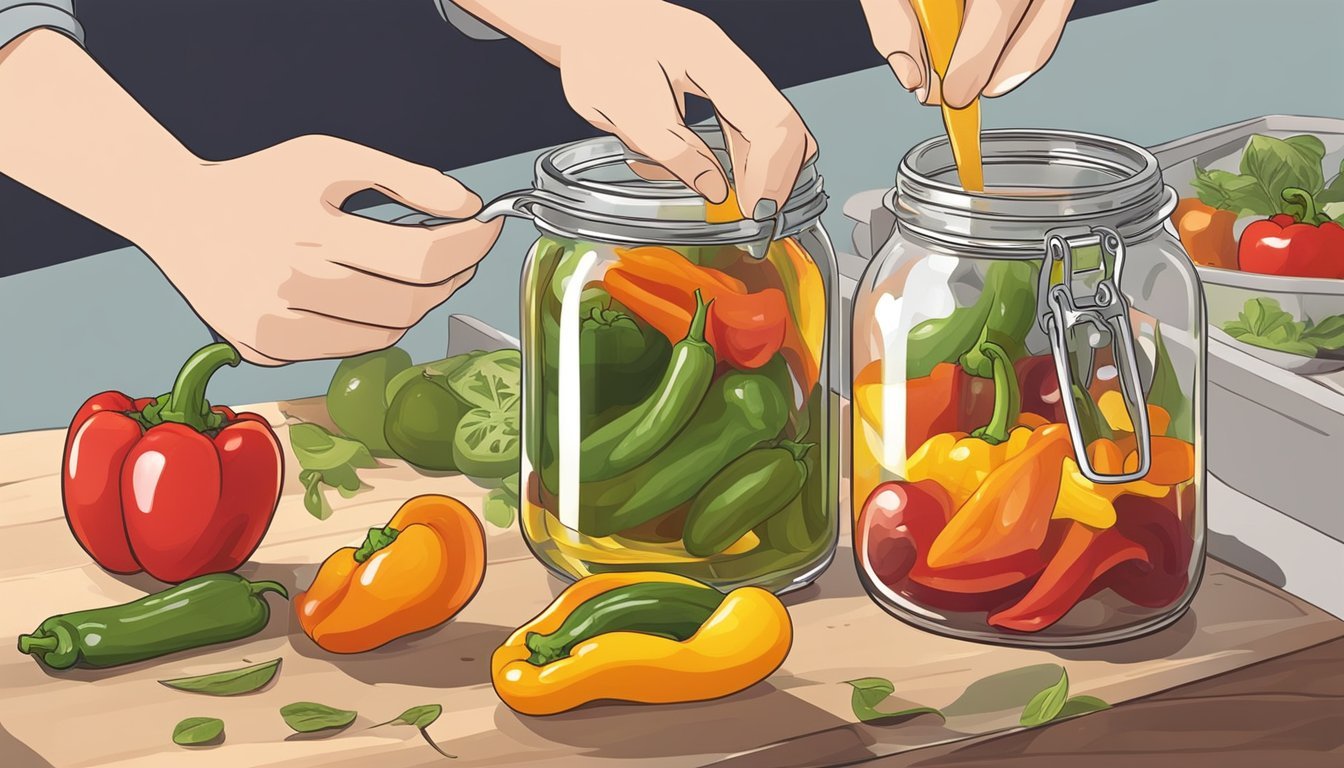Pickled Peppers Substitutes
Best Alternatives for Flavor and Crunch
Finding the perfect substitute for pickled peppers can elevate your dishes and maintain the balance of flavors. Whether it's the sweet tangy taste of Peppadew peppers or the subtle heat of pickled jalapenos, you can easily find alternatives that replicate the desired flavors and textures in your recipes.
Some of the best substitutes for pickled peppers include sweet cherry peppers, pimentos, pepperoncini, and giardiniera. Each of these options brings its own unique flavor profile, making them versatile choices for various dishes ranging from sandwiches to gourmet meals. For a milder kick, sweet cherry peppers or pimentos are excellent choices, while pickled jalapenos can add a bit more heat.
Trying out these substitutes can not only save you a trip to the store but also inspire you to experiment with new culinary creations. With these options at your disposal, you can ensure your meals are always well-seasoned and flavorful, even when pickled peppers are not on hand.
Understanding Pickled Peppers
Pickled peppers are a popular culinary ingredient known for their tangy flavor and versatility in various dishes. This section outlines their historical significance, nutritional properties, and heat levels.
History and Culinary Uses
Pickled peppers have a long tradition in various cuisines around the world. Originating as a method of preservation, pickling enhances the peppers' flavor.
Peppadew peppers are often used in sandwiches, salads, and omelets due to their mild heat and sweet-tart flavor. Cherry peppers, slightly hotter, make excellent pizza toppings and are great for stuffing.
Other varieties can be incorporated in a wide range of dishes, including salsas, relishes, and as a garnish for whole foods. The pickling process involves soaking the peppers in a vinegar-based solution, which not only preserves them but also adds a distinct tang to their flavor.
Nutritional Value and Health Benefits
Pickled peppers, while often enjoyed for their taste, also offer nutritional benefits. They are an excellent source of Vitamin C, which is crucial for immune function and skin health.
Additionally, the vinegar used in pickling can have probiotic properties, beneficial for gut health. These peppers are low in calories, making them a diet-friendly addition to meals. They also provide antioxidants, which help combat oxidative stress in the body. Regular consumption can contribute to a healthy and balanced diet.
Scoville Scale and Heat Measurement
The Scoville Scale is used to measure the heat of peppers, quantified in Scoville Heat Units (SHU). Peppadew peppers generally have mild heat, ranging from 100-500 SHU.
Cherry peppers are slightly hotter, typically between 1000-3000 SHU. This scale is essential for cooks and food enthusiasts to understand the heat level each pepper brings to a dish. When choosing pickled pepper substitutes, consider the Scoville Scale to ensure the heat level matches the intended culinary use.
Some substitutes, like pickled jalapeños, offer more heat and a sharper tang, suitable for recipes requiring a bolder flavor. Understanding the Scoville Scale helps in selecting the right pepper and creating balanced dishes with the desired heat and flavor profile.
Popular Types of Pickled Peppers
There is a wide variety of pickled peppers available, each with its own unique flavor profile and culinary uses. These include sweet and mildly spicy options, as well as some more exotic varieties.
Peppadew and Cherry Peppers
Peppadew peppers are small, round, and often pickled to enhance their sweet and slightly spicy taste. They make great additions to salads and cheese boards.
Sweet cherry peppers, another popular pickled variety, have a mild heat and are used for stuffing or as toppings on pizzas and sandwiches.
Both of these peppers offer a balanced flavor that appeals to a broad range of palates.
Pepperoncini and Banana Peppers
Pepperoncini peppers are Italian peppers that are often pickled and used in salads, sandwiches, and antipasto platters. They have a mild heat level, typically ranging from 100 to 500 Scoville Heat Units (SHU).
Banana peppers, similar in heat, are frequently pickled and used as a tangy condiment. Both types of peppers add a zesty kick to dishes without overwhelming spiciness, making them versatile options for many recipes.
Pimento and Sweet Peppers
Pimentos, or pimientos, are heart-shaped sweet peppers that are often pickled and used as stuffing for olives or in cheese spreads. Their mild, sweet flavor makes them a common ingredient in Southern cooking.
Sweet peppers, including roasted red peppers, are another popular pickled variety. They are appreciated for their sweet flavor and versatility in dishes such as salads, sandwiches, and pasta.
Specialty and Exotic Varieties
Some specialty and exotic varieties of pickled peppers include rocoto chiles and Trinidad perfume chili peppers. Rocoto chiles have a fruity flavor and a heat level of around 100,000 to 250,000 SHU, making them one of the hotter options.
Trinidad perfume chili peppers are much milder, offering a sweet and complex flavor without significant heat. These less common varieties add a unique twist to traditional dishes and are often sought after by culinary enthusiasts.
Choosing Substitutes for Pickled Peppers
When selecting substitutes for pickled peppers, one needs to consider factors such as flavor profile, heat levels, texture, and sweetness. Each of these aspects plays a crucial role in achieving the desired culinary outcome.
Based on Flavor Profile
Flavor is often the primary consideration. For a tangy, pickled taste similar to Peppadew peppers, sweet cherry peppers and pickled jalapenos are reliable choices.
Sweet cherry peppers mimic Peppadews but are slightly milder.
Pickled jalapenos provide a sharper tang and are more piquant.
Sweety drop peppers and rocoto chiles also offer a sweet and slightly sour taste, making them suitable for various recipes.
These options ensure that the dish retains the complexity that pickled peppers bring.
Considering Heat Levels
Heat levels can dramatically change the dish's outcome. Bell peppers serve as a mild substitute with no heat, ideal for those who prefer a sweeter, less spicy experience.
For moderate heat:
Jalapeno peppers offer a pleasant spiciness without overpowering.
Serrano peppers bring a bit more heat, suitable for those accustomed to a medium spice level.
For a spicier kick:
Cayenne peppers provide a strong heat and are best used sparingly.
Adjusting the amount of these peppers can help balance the heat to personal preference.
Focusing on Texture and Crunch
Texture is key for pickled pepper substitutes. Celery can offer a crunchy alternative, especially when chopped finely or pickled.
Sweet red peppers and Bell peppers also provide a satisfying crunch:
Bell peppers caramelize well when cooked, offering a sweet, crunchy texture.
Sweet red peppers hold their crunch even after cooking or pickling.
Choosing crunchy substitutes helps maintain the integrity of salads, sandwiches, and other recipes highlighting texture.
Accounting for Sweetness
Sweetness can influence the overall taste. Sweet cherry peppers and Sweety drop peppers naturally contain higher sugar levels, enhancing sweetness.
Adding honey or sugar to mild peppers like Bell or Sweet red peppers can replicate the sweet flavor found in Peppadew peppers.
Sweety drop peppers, small and vibrant, offer a unique sweetness and visual appeal.
Balancing these sweet substitutes ensures the dish has the right complexity and depth without being overwhelming.
Selecting the right substitute involves a careful mix of these factors to mimic the qualities of pickled peppers effectively.
Preparation and Use in Recipes
When preparing pickled pepper substitutes, key steps include selecting appropriate peppers and implmenting effective pickling techniques. These substitutes are versatile in dishes, adding unique flavors and textures to sandwiches, cooking, and more.
Creating Homemade Pickled Peppers
Homemade pickled peppers require fresh and firm vegetables. Choose alternatives like cherry tomato, Anaheim pepper, New Mexico pepper, or poblano pepper based on desired heat and flavor.
Steps for Pickling:
Clean and slice peppers.
Prepare the brine: Combine vinegar, water, salt, and sugar.
Boil the brine and pour it over the peppers in sterilized jars.
Cool and store: Let it cool before refrigerating.
Use the pickled peppers in various recipes like salads or as a condiment. Cherry tomatoes and poblano peppers work well in many recipes due to their mild flavor.
Incorporating Substitutes into Dishes
When using substitutes in dishes, consider the flavor profile and heat level. Sweet cherry peppers and pickled jalapenos are excellent in sandwiches, adding tang and spice. For a milder taste, use Anaheim peppers or poblano peppers in cooked dishes or cream cheese stuffed appetizers.
Substitute Ideas:
Sandwiches: Pickled jalapenos or sweet cherry peppers
Cooking: New Mexico peppers in stews
Stuffed Peppers: Cream cheese in poblano peppers
Understanding each pepper's unique characteristics ensures they enhance the flavors of your meals, making your dishes stand out.
Storage and Preservation Tips
Proper storage and preservation techniques extend the life of pickled peppers and maintain their quality.
Pickling is a popular method for preserving sweet red peppers and hot peppers. It involves submerging peppers in a solution of vinegar, water, and various spices. This acidic environment inhibits the growth of bacteria and molds.
When canning pickled peppers, ensure jars are sterilized. Fill jars with peppers and cover them with hot pickling solution, leaving appropriate headspace. Seal jars and process in a boiling water bath. This step ensures a vacuum seal, preventing spoilage.
Freezing is another effective method for preserving peppers. Slice or chop peppers, then spread them on a baking sheet in a single layer. Flash freeze for about an hour, ensuring they do not stick together. Transfer frozen peppers to airtight freezer bags or containers.
Fermentation is an alternative to pickling. In this process, peppers are submerged in a brine solution and left to ferment at room temperature for several weeks. This method not only preserves peppers but also develops unique flavors and beneficial probiotics.
To maximize shelf life, keep pickled peppers in a cool, dark place. Once opened, refrigerate to maintain freshness.
Storage Time Estimates:
Method Storage Duration Canned Up to 1 year Frozen 8-12 months Fermented Several months
These techniques ensure your preserved peppers remain flavorful and safe for consumption.




